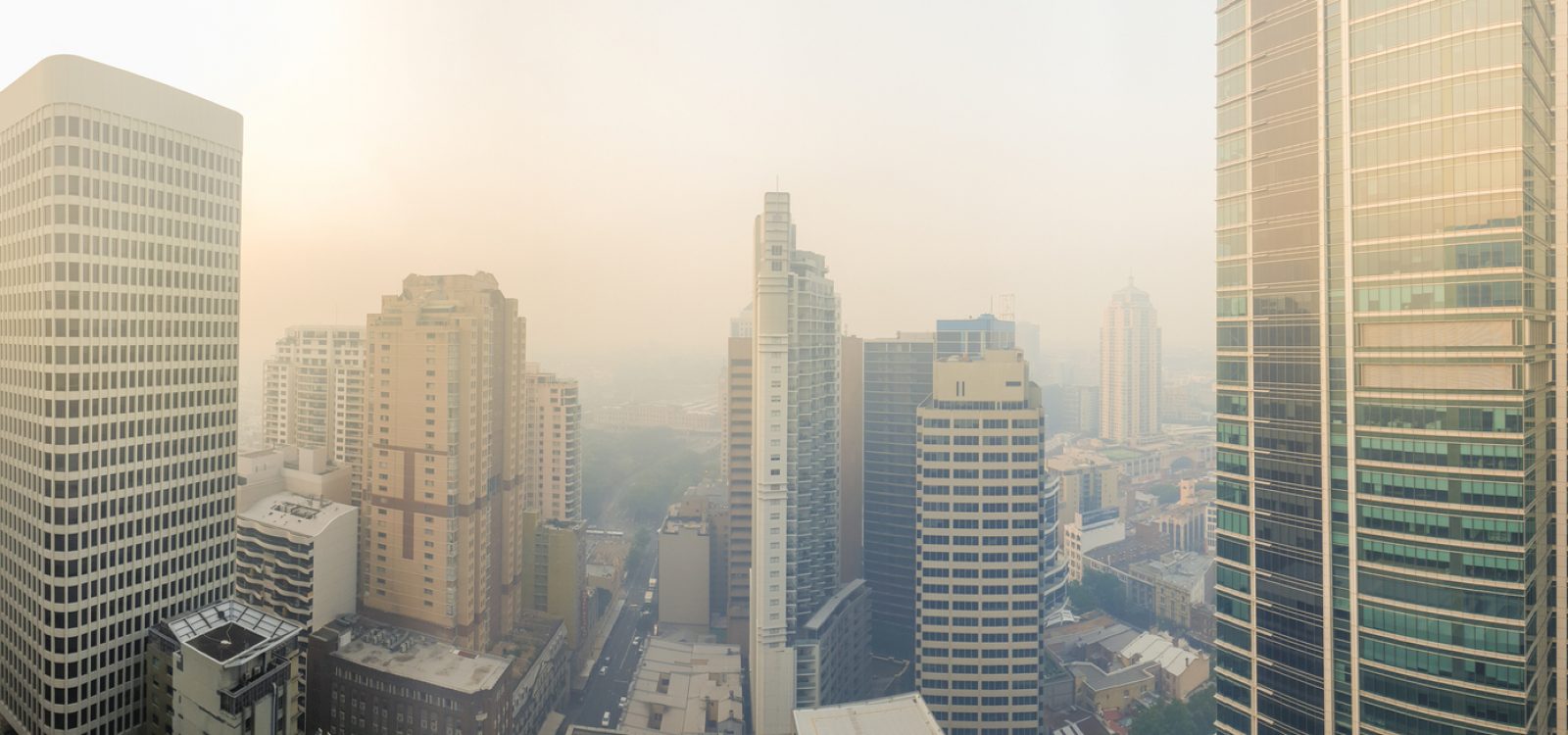
Smoke Kills – So Why Aren’t We Counting It?
As we experience one of the most devastating seasons in history, Chris Dolman highlights the significance and impact of smoke on the country, not just the fires.
Today is January 5th, a day after another significant and devastating day and night of bushfire activity across the country. I read in today’s news reports that there are 25 people confirmed dead this fire season and six still missing, though I’m afraid that figure will be higher by the time you read this.
I can’t help but suspect that the real mortality figures must be substantially higher – because we seem only to be counting the obvious, direct cases. One story that struck me over the break was of an elderly woman who died in Canberra shortly after stepping off a plane[1]. This was attributed to bushfire smoke, and now appears to have been captured in the official statistics.
How many more people have died due to acute conditions exacerbated or brought on by the recent smoke? Should these not all be captured somehow in the official statistics? It surely is not just this one unfortunate woman – this was just an obvious case. It has already been reported that hospital admissions are higher[2] [3], and there is generally accepted evidence of air quality impacting mortality, and associated guidance for the public[4].
Countless studies have attempted to estimate the effect of air quality on mortality. It would be a simple task for an agency to specify a model (perhaps leveraging this existing research) to estimate the uplift in (short term) mortality associated with poor air quality, and to then apply this model to the affected population. We could then publish two statistics – deaths directly attributable to fires (the current list), and additional estimated deaths from short term smoke exposure.
How would this help us?
Firstly, it would demonstrate to the public the very real risk associated with air pollution from fires. People are (rightly) worried about the direct risks from fire right now. I don’t see the same level of angst about smoke – people seem irritated by it rather than serious about the health effects, in spite of the messages of public health officials. But exposure to smoke from fires and hazard reduction burns has been found to be the cause of more deaths than direct exposure to fire, prior to this season[5].
People still seem genuinely confused about what to do about poor air quality. Sporting codes appear particularly confused and inconsistent. Many outdoor workers have continued in toxic conditions, when arguably they should be encouraged to stay indoors. Showing the public an estimate of the expected uplift in deaths due to smoke might cause people to take the health risks more seriously and take preventative action. Lives would be saved.
Secondly, it would allow those at high risk greater legitimacy in taking precautionary action. I will admit some selfish motive here – my family contains asthmatics who are triggered by bushfire smoke (these last few months have not been fun!) We have often found a general reaction of bafflement when telling people that we are not participating in outdoor activities due to the poor air quality. An official estimated mortality statistic like this would be very useful in reinforcing our point, and would perhaps reduce the social stigma of acting to reduce smoke risk. Again, lives would be saved as people would take more preventative action.
Thirdly, this could help us when considering fire management in future. Not only would we be able to acknowledge a truer sense of the health cost of fires, but we could also use a similar approach to help weigh the costs of fire management strategies against their benefits. Certainly, hazard reduction burning produces smoke, and this is generally acknowledged to cause deaths.[6] This should be raised as an issue when the inevitable proposals to conduct more hazard reduction burns come along, once this fire season has ended. We must weigh both the costs and benefits of hazard reduction strategies, and this must include incremental deaths and hospitalisations arising from smoke.
This fire season has been terrible and it’s not yet done. But we aren’t counting the true cost. Let’s start doing so, so that data can help guide us in taking better actions in the future.
Disclaimer: Opinions expressed in this publication do not necessarily represent those of either the Institute of Actuaries of Australia (the ‘Institute’), its members, directors, officers, employees, agents, or that of the employers of the authors.
[1]https://www.9news.com.au/national/canberra-woman-dies-smoke-air-quality-plane/32530dcf-a5e9-4285-af5f-a53a322528c7
[2]https://www.health.nsw.gov.au/news/Pages/20191113_00.aspx
[3]https://www.smh.com.au/national/nsw/nsw-bushfires-apocalyptic-health-effects-of-sydney-s-toxic-air-20191211-p53ixc.html
[4]https://www.who.int/news-room/fact-sheets/detail/ambient-(outdoor)-air-quality-and-health
[5]https://www.mja.com.au/journal/2018/208/7/health-burden-associated-fire-smoke-sydney-2001-2013?fbclid=IwAR0dLVu-rn1gGZ4oY0_1Te6afevzsy3b7jMUiXV4MzCxuyh6EbfR102tJBQ
[6]https://www.mja.com.au/journal/2016/205/9/rapid-assessment-impact-hazard-reduction-burning-around-sydney-may-2016
CPD: Actuaries Institute Members can claim two CPD points for every hour of reading articles on Actuaries Digital.






